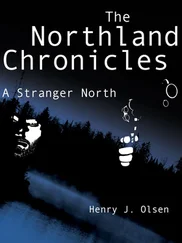North American Agroforestry
Здесь есть возможность читать онлайн «North American Agroforestry» — ознакомительный отрывок электронной книги совершенно бесплатно, а после прочтения отрывка купить полную версию. В некоторых случаях можно слушать аудио, скачать через торрент в формате fb2 и присутствует краткое содержание. Жанр: unrecognised, на английском языке. Описание произведения, (предисловие) а так же отзывы посетителей доступны на портале библиотеки ЛибКат.
- Название:North American Agroforestry
- Автор:
- Жанр:
- Год:неизвестен
- ISBN:нет данных
- Рейтинг книги:4 / 5. Голосов: 1
-
Избранное:Добавить в избранное
- Отзывы:
-
Ваша оценка:
- 80
- 1
- 2
- 3
- 4
- 5
North American Agroforestry: краткое содержание, описание и аннотация
Предлагаем к чтению аннотацию, описание, краткое содержание или предисловие (зависит от того, что написал сам автор книги «North American Agroforestry»). Если вы не нашли необходимую информацию о книге — напишите в комментариях, мы постараемся отыскать её.
Explore the many benefits of alternative land-use systems with this incisive resource North American Agroforestry
North American Agroforestry
North American Agroforestry — читать онлайн ознакомительный отрывок
Ниже представлен текст книги, разбитый по страницам. Система сохранения места последней прочитанной страницы, позволяет с удобством читать онлайн бесплатно книгу «North American Agroforestry», без необходимости каждый раз заново искать на чём Вы остановились. Поставьте закладку, и сможете в любой момент перейти на страницу, на которой закончили чтение.
Интервал:
Закладка:
Table 4–5. Percentage of sediment and nutrients removed by two riparian buffer systems in a study conducted in Iowa (adapted from Lee et al., 2003).
| Sediment or nutrient | Switchgrass only buffer removal | Switchgrass and woody stem buffer removal |
|---|---|---|
| —————————— % —————————— | ||
| Sediment | 95 | 97 |
| Total N | 80 | 94 |
| NO 3–N | 62 | 85 |
| Total P | 78 | 91 |
| PO 4–P | 58 | 80 |
The Future
It is true that we have made significant improvements in our understanding of ecological interactions in temperate agroforestry. As this chapter has revealed, we have information on above‐ and belowground interactions that define the ecological sustainability of some of the well‐known agroforestry practices such as alley cropping and silvopasture in the United States and other temperate regions of the world. We also have information on the management techniques that may reduce competitive interactions while enhancing complementarity in those systems. However, our knowledge is still limited in several areas. For example, despite much research examining resource competition, we still lack a deeper understanding of the interactive effects of multiple resources on system productivity in several agroforestry systems. Modeling has helped us understand multiple resource interactions to a great extent (Lovell et al., 2017), but continued acquisition of information at a range of scales is urgently needed. Although information on specific components and their interactions are important, we also need to pay attention to interactions of agroforestry systems with the biotic and abiotic components of the surrounding landscape matrix. Watershed‐level research and studies of agroforestry systems as wildlife habitats and corridors need to explore these relationships in detail.
Another area that needs immediate attention is the screening of species and germplasm for above‐ and belowground complementarity. Most of the improved germplasm currently used in agroforestry comes from breeding efforts for monoculture cropping systems. Breeding for crops and trees that can perform better under shade and under interspecific competition for water and nutrients needs to be initiated.
The available literature on facilitative interactions in temperate agroforestry is very limited. For example, the concept of hydraulic lift is yet to be experimentally proven in a temperate context. Information on the canopy and root architecture of many common agroforestry species is still not readily available. Dinitrogen fixation remains an unexplored and underutilized concept in many of the well‐studied temperate agroforestry systems.
A number of agroforestry practices have received little attention from the scientific community despite their popularity. For example, forest farming is an attractive agroforestry practice in many parts of the United States. However, ecological sustainability or component interactions have seldom been investigated in these systems. Similarly, incorporation of high‐value agronomic or horticultural crops into existing agroforestry practices or the design of new agroforestry systems also needs to be explored.
Conclusion
The ecological interaction among components in temperate agroforestry systems is a broad topic to cover in a single chapter; however, some generalizations can be made based on the available literature. For example, even though the impacts of competition for light, water, and nutrients can be difficult to separate for a given system due to temporal changes in climate, level of fertilization, and the varying effects that both species diversity and species size have on a system, crop production is typically decreased in areas immediately surrounding trees in agroforestry systems. In some cases, however, such as with shelterbelts, trees can have a positive impact on overall crop production or, in the case of silvopastoral systems, improve the quality of forage despite the decrease in forage production. Even though crop yields may be decreased compared with monocultural systems, by incorporating multiple species in a single system there is a possibility to increase the overall biomass production and economic value.
In addition to the potential for increased production from agroforestry systems compared with conventional agriculture, there are other potential benefits of agroforestry systems. For example, evidence supporting the safety net role of trees in temperate alley‐cropping systems shows both a reduction in the contamination of surface and subsurface water and a reduced competition for nutrients. Furthermore, this safety net effect can also be seen in woody riparian buffer strips, which can be incorporated into any agricultural system, including conventional agriculture.
Several information gaps still exist that need immediate attention by the scientific community. These vary from quantifying the interactive effects of multiple resources on system productivity to studying broader landscape‐level interactions of agroforestry systems within the landscape matrix. Despite these limitations, there is evidence that competition for light, water, and nutrients, in combination with other factors, such as allelopathy, can be managed through both the design and maintenance of agroforestry systems so that the competitive influence is minimized while the facilitative influence is maximized. This offers promise to the long‐term ecological sustainability of agroforestry systems.
References
1 Albaugh, J. M., Albaugh, T. J., Heiderman, R. R., Leggett, Z., Stape, J. L., King, K., . . . King, J. S. (2014). Evaluating changes in switchgrass physiology, biomass, and light‐use efficiency under artificial shade to estimate yields if intercropped with Pinus taeda L. Agroforestry Systems, 88, 489‐503. https://doi.org/10.1007/s10457‐014‐9708‐3
2 Allen, S. C., Jose, S., Nair, P. K. R., Brecke, B. J., Nair, V. D., Graetz, D. A., & Ramsey, C. L. (2005). Nitrogen mineralization in a pecan (Carya illinoensis K. Koch)–cotton (Gossypium hirsutum L.) alley cropping system in the southern United States. Biology and Fertility of Soils, 41, 28–37.
3 Allen, S. C., Jose, S., Nair, P. K. R., Brecke, B. J., Nkedi‐Kizza, P., & Ramsey, C. L. (2004a). Safety‐net role of tree roots: Evidence from a pecan (Carya illinoensis K. Koch)–cotton (Gossypium hirsutum L.) alley cropping system in the southern United States. Forest Ecology and Management, 192, 395–407.
4 Allen, S. C., Jose, S., Nair, P. K. R., Brecke, B. J., & Ramsey, C. L. (2004b). Competition for 15N‐labeled fertilizer in a pecan (Carya illinoensis K. Koch)–cotton (Gossypium hirsutum L.) alley cropping system in the southern United States. Plant and Soil, 263, 151–164.
5 Alley, J. L., Garrett, H. E., McGraw, R. L., & Blanche, C. A. (1998). Forage legumes as living mulches for trees in agroforestry practices: Preliminary results. Agroforestry Systems, 44, 281–291.
6 Altieri, M. A. (1991). Increasing biodiversity to improve pest management in agro‐ecosystems. In D. L. Hawksworth (Ed.), The biodiversity of microorganisms and invertebrates: Its role in sustainable agriculture (pp. 165–182). Wallingford, UK: CAB International.
7 Artru, S., Garré, S., Dupraz, C., Hiel, M. P., Blitz‐Frayret, C., & Lassois, L. (2017). Impact of spatio‐temporal shade dynamics on wheat growth and yield, perspectives for temperate agroforestry. European Journal of Agronomy, 82, 60–70.
8 Asbjornsen, H., Shepherd, G., Helmers, M., & Mora, G. (2008). Seasonal patterns in depth of water uptake under contrasting annual and perennial systems in the Corn Belt region of the midwestern US. Plant and Soil, 308, 69–92.
Читать дальшеИнтервал:
Закладка:
Похожие книги на «North American Agroforestry»
Представляем Вашему вниманию похожие книги на «North American Agroforestry» списком для выбора. Мы отобрали схожую по названию и смыслу литературу в надежде предоставить читателям больше вариантов отыскать новые, интересные, ещё непрочитанные произведения.
Обсуждение, отзывы о книге «North American Agroforestry» и просто собственные мнения читателей. Оставьте ваши комментарии, напишите, что Вы думаете о произведении, его смысле или главных героях. Укажите что конкретно понравилось, а что нет, и почему Вы так считаете.












